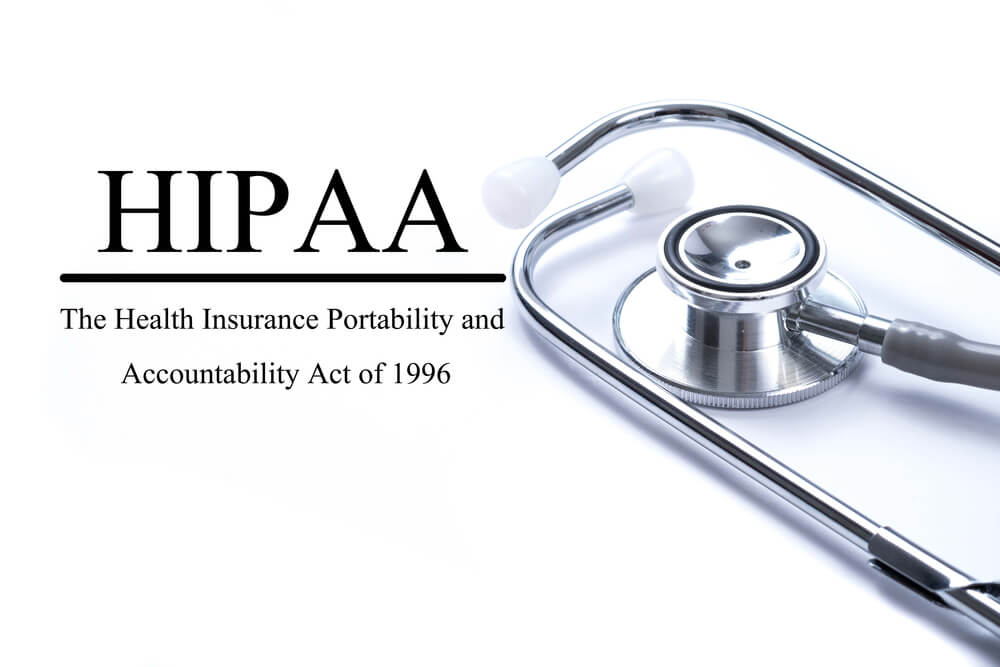
Easy Steps To Build a Drug Rehab SEO Strategy That Works Now
Drug rehab centers need a strong online presence to draw in people seeking addiction support online. Search engine optimization (SEO) boosts website visibility to those in need of addiction treatment.
Drug rehab SEO can effectively connect those in need with the appropriate resources and support. Let us guide you in building an effective SEO strategy with these steps:
- Keyword research
- On-page optimization
- Content creation
- Local SEO
- Link building
- Mobile optimization
- Health Insurance Portability and Accountability Act of 1996 (HIPAA)
- Monitoring and analytics
Learn how to be found by the people who need your business. Let’s go!
Want to learn more about the Digital Authority Partners approach to SEO? Watch this video!
1. Focus on Keyword Research

Keyword research helps identify the specific terms and phrases potential clients use when seeking addiction treatment. Using these keywords, rehab centers can optimize their website content to appear prominently in relevant search results, enhancing their online visibility and attracting qualified leads.
Having this targeted approach ensures the facility's services and expertise align closely with the needs and queries of patients and their families, ultimately improving the overall effectiveness of the SEO strategy. Focus on keyword research with these techniques:
- Identify the demographics and specific needs of individuals seeking drug rehab services.
- Find relevant keywords, search volumes, and addiction treatment and rehabilitation trends with Google Keyword Planner or other similar tools.
- Use long-tail keywords that reflect specific queries and intent for less competition and higher conversions. Example: "affordable holistic drug rehab centers for veterans in San Diego" and "holistic drug rehab centers for young adults with personalized therapy programs."
- Analyze the keywords competitors rank for to identify gaps and opportunities within the drug rehab space.
- Incorporate location-specific keywords to capture individuals searching for rehab services in the facility's vicinity.
- Constantly update and refine keyword strategy based on changes in search trends, user behavior, and the evolving landscape of drug rehab services.
2. Perform On-Page Optimization
On-page optimization means fine-tuning website content, metadata, and structure to improve search engine visibility. Rehab centers can enhance their website's relevance and authority in search engines by incorporating relevant keywords, creating compelling meta tags, and ensuring a seamless user experience.
Optimizing on-page elements boosts organic search rankings and ensures a helpful experience for individuals seeking addiction treatment. Follow these strategies to perform on-page optimization for drug rehab websites:
- Use relevant and high-intent keywords naturally in the page title, headers, meta descriptions, and throughout the content.
- Develop informative and engaging content that addresses the specific needs and queries of individuals seeking drug rehab services, such as:
a. Understanding Addiction: Exploring the Science Behind Substance Dependency
b. Signs and Symptoms of Substance Abuse: Recognizing When to Seek Help
c. Navigating Different Types of Addiction Treatment Programs: Which Is Right for You?
- Improve page loading times by compressing images, minimizing redirects, and leveraging caching.
- Enhance the user experience (UX) with intuitive navigation, readable font sizes, and mobile responsiveness.
- Link relevant pages within the website to improve site structure, distribute link equity, and guide users to related resources.
Finally, write compelling meta titles and descriptions that accurately represent the content and encourage users to click. For example, "Transform Your Life: Trusted Drug Rehab Center for Lasting Recovery" is a meta title.
For meta descriptions: "Regain control and embrace a life of sobriety with our renowned drug rehab center. Our compassionate experts provide personalized treatment plans tailored to your needs. Begin your journey to lasting recovery today.”
3. Engage in Pillar Content Creation

Pillar content creation allows treatment centers to establish comprehensive, authoritative resources as the cornerstone of their online presence. With in-depth, informative content covering various treatment aspects, rehab facilities can position themselves as leading authorities in the field.
This strategy enhances the website's search engine visibility, encourages higher user engagement, and increases the likelihood of social sharing. These best practices can help with pillar content creation:
- Research and understand the pressing and commonly asked questions about drug rehab and create pillar content that addresses these topics.
- Develop comprehensive guides, ebooks, or resources that cover various aspects of addiction, treatment methods, recovery processes, and support systems.
- Enhance the pillar content with multimedia elements such as infographics, videos, and interactive features to make the content engaging and accessible.
- Update and maintain content to reflect the latest information, industry trends, and advancements in drug rehab treatments.
- Promote social sharing by adding social sharing buttons and encourage users to share the pillar content on social media platforms.
Lastly, integrate a cohesive internal linking strategy to connect the pillar content with related blog posts, articles, or service pages within the website. This establishes a solid interlinking network that enhances the overall SEO value of the content and the website.
4. Integrate Local SEO
Integrating local SEO into marketing optimization strategy allows treatment centers to target individuals seeking addiction treatment within their immediate area. Rehab centers can significantly enhance their visibility in local search results by using local keywords, creating location-specific landing pages, and ensuring consistent business information.
Local SEO facilitates a stronger connection with nearby clients needing addiction treatment and improves the likelihood of generating quality leads. It involves a comprehensive optimization strategy with the following tactics:
- Claim and optimize your Google Business Profile (GBP) with accurate and up-to-date information, including the facility's name, address, phone number, website, and operating hours.
- Incorporate location-specific keywords within the website content, meta tags, and headings to target individuals searching for local drug rehab services.
- Develop localized content, such as blog posts, case studies, or testimonials, that showcase the facility's involvement in the local community and commitment to providing personalized care to clients.
- Ensure consistent and accurate information across online directories and citation sites, including Yelp, Yellow Pages, and other relevant platforms.
- Encourage satisfied clients to leave positive reviews and ratings on GBP and other review platforms, as these can significantly affect local search rankings and reputation.
Establish connections with local businesses, organizations, and community groups to acquire backlinks from authoritative local sources. These can help boost community involvement and local authority.
5. Build Quality Backlinks

Building quality backlinks helps establish the credibility and authority of the treatment center's website in the eyes of search engines. Securing links from reputable and relevant sources helps rehab facilities boost their online visibility, organic traffic, and overall search engine rankings.
Additionally, these backlinks testify to the facility's expertise and reliability. These further solidify its reputation within the addiction treatment industry and develop a broader network of connections to drive potential clients to its website. Creating quality backlinks takes expertise and patience. These strategies can help drug rehab centers:
- Contribute high-quality guest posts to reputable websites and blogs in healthcare and addiction treatment niches.
- Create informative and engaging content, such as research studies, in-depth articles, or infographics, that other websites and publications would find valuable to link to.
- Collaborate with local healthcare providers, community organizations, and addiction support groups to establish partnerships and secure local backlinks.
- Utilize directories and resource pages within the healthcare and addiction treatment industries to acquire quality backlinks from trusted and authoritative sources.
- Engage in public relations activities, such as issuing press releases, participating in industry events, or contributing to local news outlets.
Regularly monitor the backlink profile to identify and disavow any toxic or spammy backlinks that could harm the website's SEO performance. These strategies can ensure a healthy and authoritative backlink profile for the drug rehab site.
6. Prioritize Mobile Optimization
Prioritizing mobile optimization is a critical drug rehab SEO strategy as more individuals access information through mobile devices. With a responsive, user-friendly website across mobile platforms, the facility can cater to the needs of a larger audience and provide a seamless browsing experience.
Mobile optimization enhances the site's visibility in search results and improves user engagement and satisfaction. Here are the best ways rehab centers can prioritize mobile optimization:
- Ensure the drug rehab website has a responsive design that automatically adjusts its layout and content to fit various screen sizes and devices.
- Optimize content for mobile consumption by using concise paragraphs, clear headings, and legible fonts to improve readability and user engagement.
- Implement AMP technology to create fast-loading and user-friendly versions of web pages.
- Compress images, leverage browser caching, and minimize HTTP requests to enhance site speed and decrease loading times.
- Simplify navigation by implementing intuitive menus, clear call-to-action buttons, and easy-to-use forms optimized for touch, enabling users to access information and services on their mobile devices.
Regularly conduct mobile testing and monitoring using tools such as Google's Mobile-Friendly Test and PageSpeed Insights to identify issues or areas for improvement. Testing also ensures the website consistently provides an optimal experience for mobile users.
7. Ensure HIPAA Compliance

Ensuring HIPAA compliance is critical to a drug rehab SEO strategy as it safeguards the privacy and confidentiality of patients' sensitive information. Emphasizing adherence creates trust and credibility with potential clients.
Adhering to strict HIPAA regulations demonstrates a commitment to ethical practices and client confidentiality. It fosters a sense of security and assurance among individuals seeking addiction treatment. HIPAA compliance protects the facility from potential legal ramifications and cultivates a positive reputation within the healthcare industry.
Achieve HIPAA compliance through the following:
- Utilize secure socket layer (SSL) encryption to protect any data transmitted between the website and users, ensuring the confidentiality and security of sensitive information.
- Host the website on servers that meet HIPAA compliance standards and provide the necessary safeguards to protect patient data.
- Implement strict access controls and authentication protocols to ensure that only authorized personnel can access, modify, or manage sensitive patient data on the website.
- Outline the facility's privacy policies and disclaimers regarding the collection, storage, and use of patient data, providing transparency and assurance to website visitors about their privacy and rights.
- Provide comprehensive training to all staff members on HIPAA regulations, data security best practices, and the proper handling of confidential patient information.
Perform regular compliance audits and assessments to identify potential vulnerabilities or breaches in HIPAA regulations. Taking proactive measures to address any issues ensures the drug rehab center’s highest data security and patient confidentiality standards.
8. Conduct Monitoring and Analytics
Conducting monitoring and analytics allows treatment centers to track the performance of their online efforts, understand user behavior, and make data-driven decisions. Using tools such as Google Analytics, rehab facilities can gain insights into website traffic, user engagement, and conversion rates. They can identify successful strategies and areas for improvement.
Regular monitoring and analytics refine SEO strategies and measure the effectiveness of various marketing initiatives. These are the top drug rehab SEO monitoring and analytics techniques:
- Set up Google Analytics to track key metrics such as website traffic, user engagement, conversion rates, and other performance indicators.
- Establish key performance indicators (KPIs) that align with the goals of the drug rehab facility, such as the number of inquiries, calls, or form submissions.
- Generate regular reports on SEO performance, highlighting trends, areas for improvement, and successful strategies.
- Track the rankings of target keywords related to drug rehab services to assess the effectiveness of the keyword strategy.
- Analyze user behavior on the website, including click-through rates, bounce rates, and time spent on a page, to understand how visitors interact with the content.
Finally, conduct regular competitor analysis to benchmark the facility's SEO performance against other providers. Competitor analysis identifies competitive strengths and weaknesses to refine SEO strategies.
Summing Up
These steps to create the best SEO strategy ensure the success of a drug rehab center’s marketing strategies. Providers can enjoy increased visibility, improved engagement, and higher conversions with a well-established SEO strategy.
Learn more about creating a formidable SEO strategy by partnering with the experts in drug rehab SEO. Contact Digital Authority Partners (DAP) today!
Want To Meet Our Expert Team?
Book a meeting directly here




